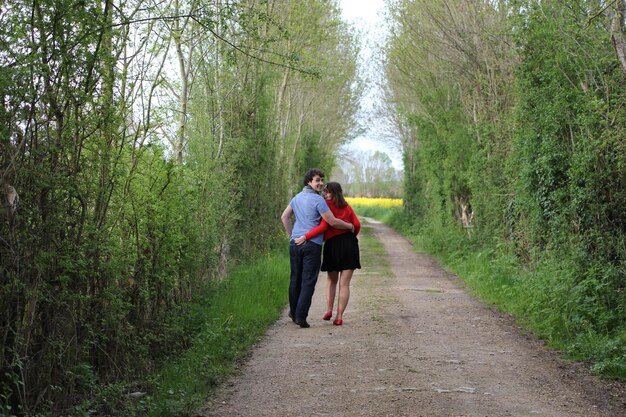Both romantic relationships and friendships with family were aspects of life you cannot live without. They are rich and textured, providing warmth and support, but there are times when the bonds seem too frayed to repair. When a relationship is having hard times, it might feel as if there’s no way to heal. But there is a path of healing and restoration; this is the purpose of relationship reversal. It is a process in which you look to the root of the issues and explore what happened in the past, how you learned to cope with the pain, and what you can do to help achieve a better, stronger relationship. If you are familiar with me as a couple’s therapist with a reputation for working with “stuck” relationships, you may have been referred by someone to learn about relationship reversal.
Definition of Relationship Reversal:
With relationship reversal, the focus is on looking back on your relationship and looking for things that may have gone wrong. It’s not about forgetting the past but embracing it to help us in the future. This process necessitates both partners to reflect on prior mistakes and emotional injuries. It may be painful to revisit those moments, but it is the first step towards healing. Relationship Reversal does not teach them to move forward quickly, or run away from trauma; rather, it guides them to the root cause of their struggles.
It also allows them to collaborate to restore trust, resolve misunderstandings, and practice communicating differently. This approach doesn’t require assigning blame. It’s about understanding what went wrong and how both partners can progress with better communication, more patience, and stronger love. To heal a relationship through relationship reversal, honesty, vulnerability, and the willingness to change are necessary.
The Secret to Healing: Self-Awareness
Understanding the Past
- Being self-aware helps to heal in a relationship. Your past actions and their consequences on the relationship help you understand what was going wrong.
- Don’t blame yourself, though; do try to see your part in the dynamics, because understanding that allows you a chance to grow and change.
Identifying emotions and triggers:
- Mindfulness about your emotions, triggers, and behavioral patterns is necessary for healing. This awareness helps you respond next time more skillfully.
- Start using that information to help you better manage your emotions and create healthier responses.
Better communication and patience:
- Because of self-awareness, you are more patient, listen, and communicate your feelings without making a mess.
- Mutual self-awareness not only enriches individual growth but can also significantly enhance the relationship as a whole, promoting a culture of support and respect.
A New Foundation: Vulnerability and Connection
Vulnerability and communication are key in any relationship. It can be difficult to express feelings when a relationship hurts. But being vulnerable is a must in relationship reversal. It’s important that both partners feel safe enough to be truthful about how they feel. That means discussing the painful things, the ways you’ve been let down, and the needs that have gone unmet. It’s also about listening closely and with no judgment.
This helps both partners feel that they have been heard and understood. At times, we do not say how we feel as we are afraid of being rejected or confronting others. However, honesty is a way to build trust and facilitate the healing process. Vulnerability isn’t weakness; it’s the willingness to be honest and open enough to repair the connection between you.
Step by Step: Rebuilding Trust
Trust is the cornerstone of a good relationship. It’s hard to move on from distrust. But when trust has been violated, rebuilding it is a joint project. Relationship Reversal is designed to help you with just that. It takes time, patience, and consistent actions to rebuild trust. You can’t just say “I’m sorry.” You need to demonstrate by your behavior that you can be trusted.
This starts with transparency: being honest about how you feel, what you’re doing, and what your intentions are. Rebuilding trust also takes repetition, doing the things that indicate you can be counted on, again and again. Being reliable, whether that’s being there for each other, keeping promises, or simply being thoughtful in small ways, is a two-sided process, and it takes work from both sides to rebuild. When trust is repaired, the relationship can be better than ever.
3 Ways to Heal from Your Pain: Rising from the Ashes of the Past
Acknowledging the Pain
- Relationship Reversal’s main part used emotional healing. Stacked emotions like anger, sorrow, or guilt can inhibit progression if not processed.
- You must give you and your partner time to feel and process these emotions instead of blocking or stuffing them down.
Seeking/Requesting for Professional Help
- Talking to a therapist or a counselor can help with emotional healing. Experts offer advice, tools, or techniques for coping with feelings in a healthy manner.
- Therapy provides a safe environment to discuss painful feelings and insight into the causes of these feelings.
Reestablishing the connection
- When these emotional wounds start to heal, you will feel lighter and more connected to your partner.
- The process of healing allows emotional clarity, and pride to return to the relationship with a new eye and an increased understanding.
Recreating Love: Rebuilding the Trust
After you have acknowledged past wounds, communicated honestly, and restored trust, it’s time to rediscover the love that drew you to each other. With relationship reversal, not only do you get to start again in love and passion, but you also get to make it last as you realize what you need from each other emotionally. Falling in love again is not the same as it used to be. It is, instead, about building a new and better bond with the knowledge you have gained.
Instead of looking at the negatives, look for the positives in your relationship to encourage love again. Enjoy each other’s company, and recognize each other’s contributions. Relearning love usually requires remapping your relationship as both a sustaining entity, and an idea—into another paradigm—one that lifts each other up, and gives you both thoughts for a more harmonious tomorrow.
Forgiveness: Moving through the Pain
Forgiveness is another vital component of healing. To accept this possibility, we must forgive ourselves and each other for past mistakes and move forward. Forgiving is not a simple act, especially if you’ve been deeply hurt. However, anger or resentment does serve to keep you in the past. Forgiving each other means letting you move forward with your relationship without holding on to hurtful memories of what happened in the past.
Forgiveness doesn’t mean you erase the memory of what happened, but you are choosing to release the pain and advance. Forgive yourself also, because forgiveness means that too. At times, we can be our own worst critics. Be kind to yourself; no one is perfect, and give yourself the grace to learn from your mistakes.
Conclusion
The path of relationship reversal is not smooth, yet it can lead to beautiful things. It takes work, it takes courage, and it takes humility. However, you can rebuild love in your relationship through reflection, open conversations, rebuilding trust, and emotional healing. Relationship Reversal is there to teach us how to overcome the past, how to heal our wounds, and how to grow together.
The process can feel raw and painful, but it’s all about forging a deeper, more meaningful connection. Regardless, if you both are willing to undergo the process, you can change your relationship and rediscover the love you both deserve! Related articles in Caretaker: It is a process, but with diligence and patience, relationship reversal is the path to a stronger, more fulfilling relationship.




